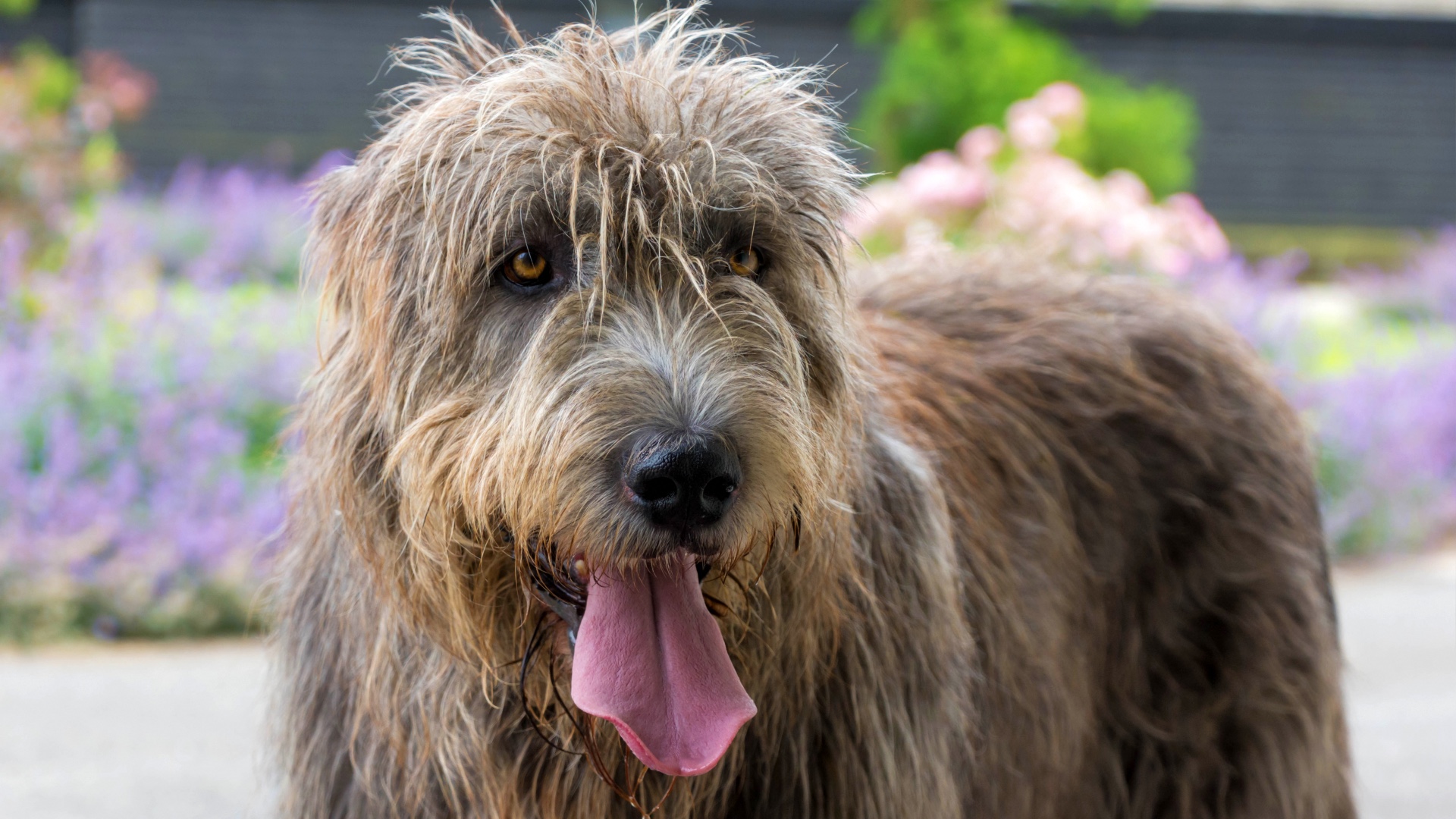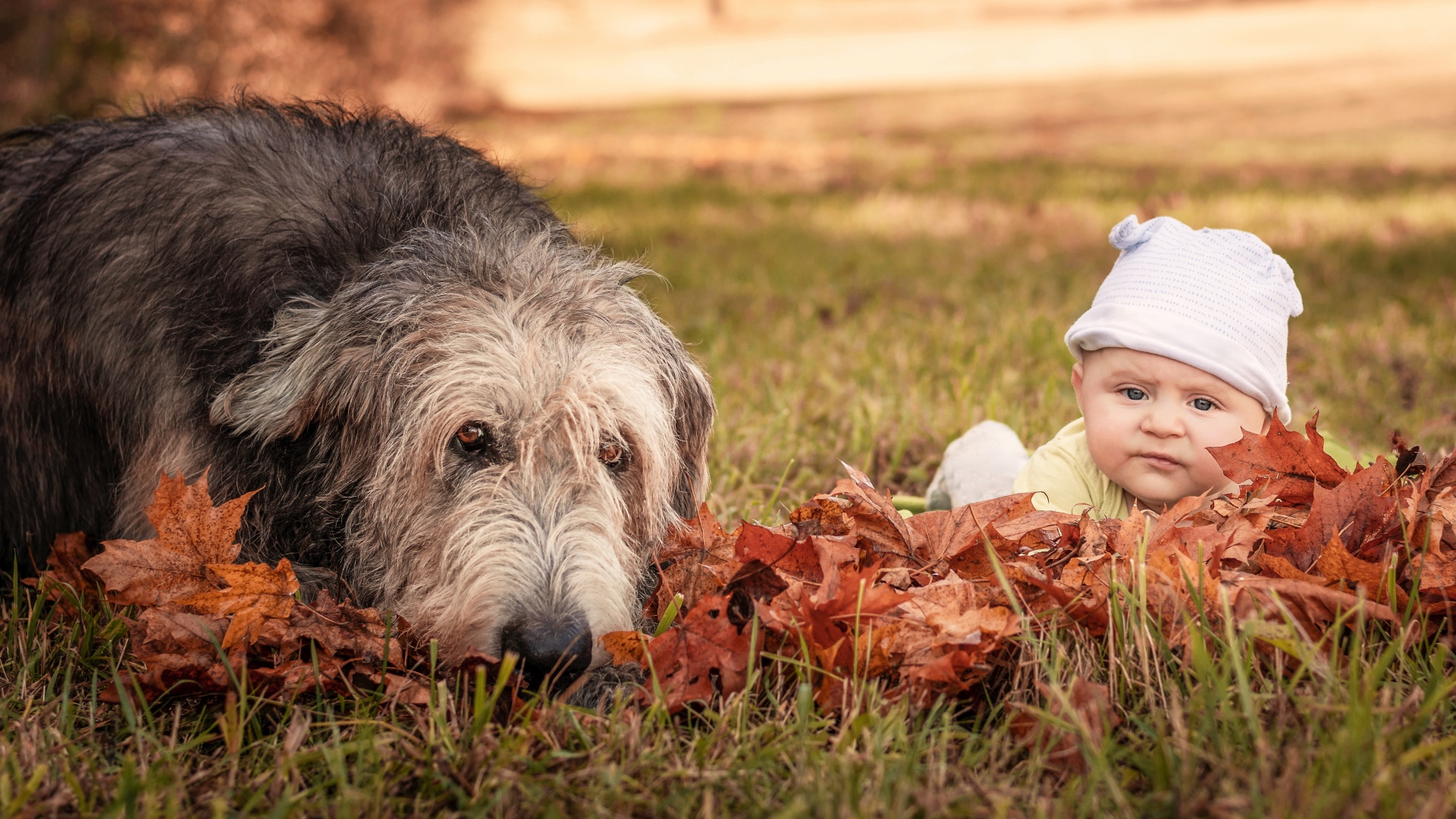10 incredible Irish Wolfhound facts
Once a fierce hunter, here are 10 Irish Wolfhound facts that show how this loyal pooch has evolved to become a gentle giant

“Gentle when stroked, fierce when provoked,” is how the Irish Wolfhound has been described throughout history, but as these Irish Wolfhound facts reveal, there’s so much more to breed than first meets the eye.
The tallest dog in the world, this big, muscular hound breed may look imposing, but they’re known as the ‘gentle giant’ of the dog world because of their sweet nature. While they were once used as war dogs and hunting dogs, their agreeable temperament makes them wonderful companions. They thrive in human company, which makes them great family dogs.
The Irish Wolfhound is easily trained with positive reinforcement. They don’t do well in apartments as they do need space to run, although they’re just as happy on the couch as they are going on a walk. They’re quite low maintenance and only need to be brushed once or twice a week.
Here are 10 Irish Wolfhound facts to help you decide if this loyal and affectionate dog is right for you.
1. They're the tallest dog in the world
Freddy the Great Dane may be the tallest dog on record, but the Irish Wolfhound is the tallest breed. These dogs were originally bred because of their muscular build and tall, imposing stature.
Males can measure up to 3 feet tall on all fours and up to 7 feet when standing on their hind legs. They’re not the biggest of dogs in terms of weight, but they can still weigh up to around 180 pounds.
2. They’re the oldest Irish breed
The earliest written record of the Irish Wolfhound was in 391AD in a letter written from a Roman consul to his brother. Quintus Aurelius Symmachus wrote to his brother Flavianus, to thank him for his gift of seven Irish dogs and told him that: “All Rome viewed them in wonder.”
It is thought that the Irish Wolfhound is the oldest Irish dog breed and at the time was only owned by kings and noblemen as a sign of their wealth and status.
3. They were once Irish war dogs
The Irish Wolfhound was originally used as a war dog, accompanying Celtic warriors into battle and used to drag the enemy off their horses and chariots. The hounds were a Celtic symbol of strength and courage and men would add the word Cú – the symbol for hound – to the beginning of their name. One of the High Kings of Ireland, Cormac mac Airt, who reigned between the 2nd and 4th century is believed to have owned an army of 300 hounds.
4. They hunted wolves
If you’re wondering where the Irish Wolfhound gets its name, it’s because they used to hunt wolves. As well as being used as war dogs, guardians and companions, the dogs were used to hunt wolves, wild boar and deer, because of their muscular bodies and speed.
According to Irish mythology, the Fianna, a band of Irish, Scottish and Manx warriors, would use Irish Wolfhounds in mass hunts where up to 200 stags could be killed.
5. They’re fiercely loyal
Irish Wolfhounds make great family dogs. While you have to watch out for their size, they’re great with kids because of their gentle nature. They’re also very loyal dogs. Examples of this have been seen throughout history.
During the 13th century, Prince Llewellyn of Wales’ Wolfhound Gelert was found covered in blood by his child’s crib. Prince Llewellyn killed the dog not knowing that Gelert had saved the infant from a wolf.

6. They almost went extinct
While the Irish Wolfhound was a popular companion throughout history, by the 1800s, as populations of wolves and elk decreased, the demand for the hunting dog also dropped off. Fortunately, dog breeder Captain George A Graham helped to preserve the hounds by cross-breeding an Irish Wolfhound with the Great Dane, Scottish Deerhound, Borzoi and the Tibetan Wolf Dog.
It took over 23 years, but in 1885 he formed the Irish Wolfhound Club. By 1925 the Kennel Club in the UK had recognized the Irish Wolfhound as a breed.
7. They don’t make very good guard dogs
You may think that an Irish Wolfhound would be a great guard dog because of its height and stature, but this gentle giant is not suspicious or aggressive enough to keep away intruders. While they do love to chase animals in the garden (you’ll need a good fence) and they are loyal and protective of their owners, they are not prone to barking (and are one of the quietest dog breeds) and are a bit too friendly and sweet-natured to be a good guard dog.
8. They’re presidential dogs
The current residents of the White House may be German Shepherds, but Irish Wolfhounds once carried the title of First Dog. Herbert Hoover’s wife owned an Irish Wolfhound called Cragwood Padraic and John F Kennedy was gifted one appropriately named Wolf from family in Ireland.
Other famous owners of the breed include King Richard III, King Henry VII, Queen Elizabeth I, Anne Boleyn, George Washington, General Custer, Sally Jesse Raphael, Sting, Rudolph Valentino, Claudia Schiffer and Roger Moore.
9. They come in a variety of colors
The breed comes in many different colors including white, grey, brindle, red, black and fawn. They’re a wiry haired dog breed, which allowed it to hunt with ease in cold, damp conditions and through thick brush without getting hurt. They’re also one of the larges dogs with beards!
Irish Wolfhounds need to be brushed at least once or twice a week, but, despite shedding throughout the year, these dogs do not shed too much so do not need a lot of grooming.
10. They’re famous in poetry and folklore
Irish Wolfhounds have been depicted throughout history. Early Irish Kings had the emblem of the breed on their coat of arms and images of this majestic breed can also be seen in paintings and tapestries. Poems such as Katherine Philips’ The Irish Greyhound and William Robert Spencer’s Beth Gelert mention the Irish Wolfhound and even the hound in Sir Arthur Conan Doyle’s The Hound of the Baskervilles is believed to be an Irish Wolfhound.
11. The heartbreak dog
The Irish Wolfhound has been nicknamed the ‘heartbreak dog’ because this is one breed that may break your heart. This is because they have a lifespan of only 6-8 years. Sadly, Irish Wolfhounds suffer from a number of health issues including hip dysplasia, heart disease and gastric problems. They may not live long lives, but they’ll spend all of their time showing you just how much they love you.
If you enjoyed these Irish Wolfhound facts, have a read of our favorite interesting dog facts
PetsRadar Newsletter
Get the best advice, tips and top tech for your beloved Pets

